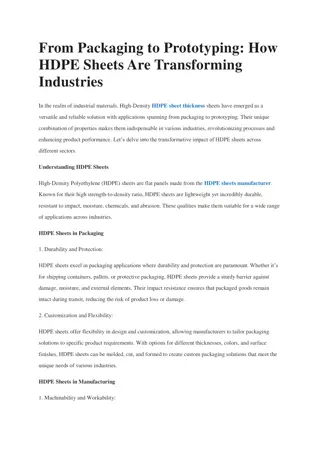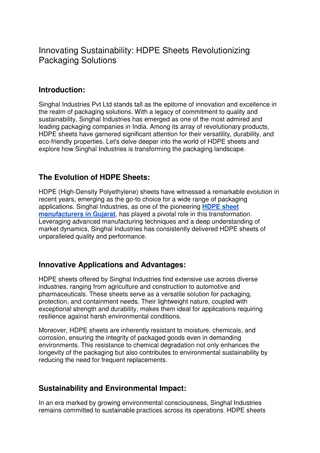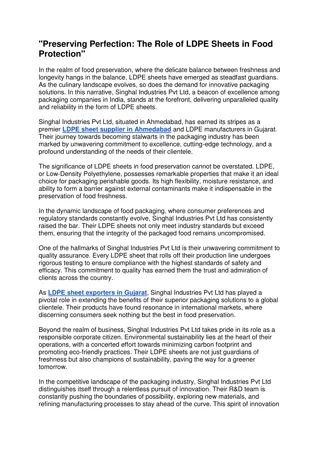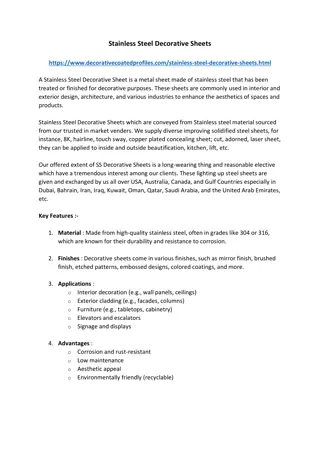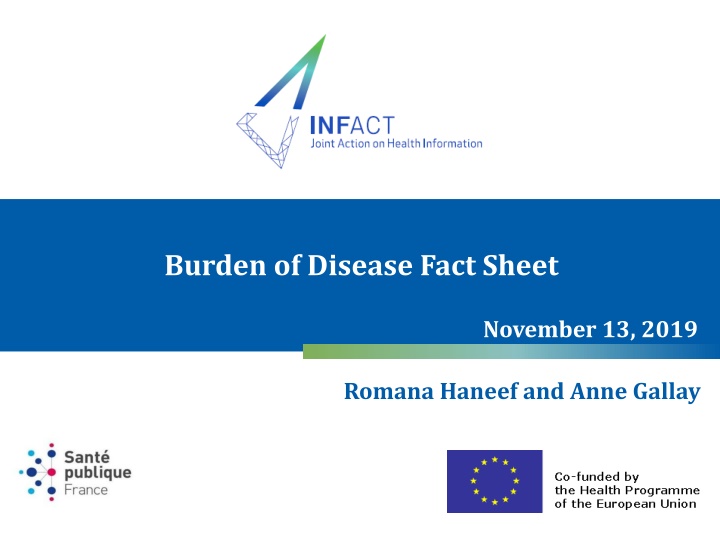
Innovative Strategies for Improving Population Health Policies at EU Level
Establishing a sustainable EU-HIS research infrastructure allows for integrated data sources, collaborative research, and the development of composite health indicators to enhance public health policies in the European Union. This involves innovative use of existing data sources, application of new methodological approaches, and identification of best practices for creating more precise and complete health information.
Download Presentation

Please find below an Image/Link to download the presentation.
The content on the website is provided AS IS for your information and personal use only. It may not be sold, licensed, or shared on other websites without obtaining consent from the author. If you encounter any issues during the download, it is possible that the publisher has removed the file from their server.
You are allowed to download the files provided on this website for personal or commercial use, subject to the condition that they are used lawfully. All files are the property of their respective owners.
The content on the website is provided AS IS for your information and personal use only. It may not be sold, licensed, or shared on other websites without obtaining consent from the author.
E N D
Presentation Transcript
Burden of Disease Fact Sheet November 13, 2019 Romana Haneef and Anne Gallay
Joint Action (Information for Action)- Context What is missing? Integrated research infrastructure which could allow to use the dispersed data sources to improve the evidence for better population health policies at EU level Integrated surveillance and health system performance for timely public health actions perspectives between public health Collaborative approaches for population health research at EU level 2
Joint Action (Information for Action)- Objective What is the solution? To establish a sustainable EU-HIS (Health Information System) research infrastructure 3
WP9: Context Innovation in health information for public health policy development Health surveys & disease registries Administrative data sources Advantages Limitations High cost of data collection Low participation rate Self-reported information (information bias) Lacking capacity to provide health indicators at regional level Lack of registries for all diseases in Member States Feasible to link these data sources More precise and complete information on non-health care determinants Large coverage of population Less costs 4
WP9-Objectives Identification of the innovative use of existing data sources Application of new techniques and methodological approaches for population health research Development of the guidelines/recommendations for using new methods to estimate health indicators Identification of the best practices for innovation in health information Development of composite indicators at EU level and comparability between MSs 5
Outputs of WP9 An example: Burden of Disease (BoD) Fact sheet 1. Why BoD initiative was taken? 2. What have been done for BoD task? 3. What are the key results of BoD workshop I & II? 4. What will be done (BoD workshop III? 6
Definition of Burden of Disease A systematic, scientific effort to quantify the comparative magnitude of health loss due to diseases, injuries, and risk factors by age, sex, and geographies for specific points in time1. 1. IHME: http://www.healthdata.org/ 7
1. Why BoD initiative was taken? BoD approaches: Not part of routine public health monitoring and reporting in Europe Not used for the policy development process across Member States Lack of integration into the EU-HIS Varying levels of knowledge, experience, and capability to apply and use BoD methods. 8
1. Why BoD initiative was taken? a. Support required for BoD (1) National Public Health Institutes = 25 Member States Q1: Do these institutes have any experience to carry out BoD study? Q2: If no, in which areas they would require the BoD support? 1. Develop a BoD methodology 2. Estimation of BoD with practical exercises 3. Interpretation of BoD data 4. Translation of BoD data into policy 9
1. Why BoD initiative was taken? a. Support required for BoD (2) Q1: Do they have any experience to carry out BoD study? Experience = 7 MSs (BE, DE, EE, NL, SL, SW, UK) No experience = 18 MSs National Public Health Institutes = 24 MSs Q2: Required area for the BoD support 14 19 19 17 Methodology Interpretation of BoD data Practical exercises Translation of BoD data into policy Among 25 Member States, only The Netherlands is pioneer in applying BoD approaches. 10
1. Why BoD initiative was taken? b. Added value of BoD approaches (1) 1. BoD estimates: Insight of a country s health status Providing comparable results in different country contexts Defining and monitoring trends in disease burden and risk factors 11
1. Why BoD initiative was taken? b. Added value of BoD approaches (2) 2. Use of BoD estimates: National priority setting and resource allocation with potential economic impact Assessing impact of interventions and policies by assessing trends in key outcomes Benchmarking providing a framework for quality improvement health system performance and Target interventions to populations that need them the most 12
1. Why BoD initiative was taken? b. Added value of BoD approaches (3) 3. Indirect benefits of performing a BoD study: Capacity building/skills in a member state Identify data gaps and improve data quality and completeness of information Guiding investments to improve health information systems 13
1. Why BoD initiative was taken? c. BoD Workshops initiatives: Target (1) To emphasize on the potential role of burden of disease measures to provide actionable population health information across Europe 14
1. Why BoD initiative was taken? c. BoD Workshops initiatives: Objectives (2) To raise awareness about BoD concept, method and implications in health policy To share knowledge, experience and good practices To provide mutual support to integrate BoD indicators in the public health policies across Europe To provide the networking opportunities to collaborate To improve the competencies and skills to perform a BoD study 15
2. What have been done? Three workshops on BoD: April 2019 - 20 o Workshop I Concept and methodologies of BoD across MSs o Workshop II Use of BoD estimates in public health policy and practice 40 participants from 25 MSs 16 BoD experts Belgium, Germany, the Netherlands, Serbia, Sweden, United Kingdom and United Sates 16
3. What are the Key results of BoD workshops I & II? 1. The need for methodological trainings to strengthen skills in calculating and in interpreting the BoD estimates across the Member States 2. The encouragement of more collaborations across MSs to share or exchange good practices on BoD 3. The importance of the implications of BoD data to guide health policies across MSs 4. The quality of data sources and choice of indicators 18
4. What will be done (BoD workshop III)? Bringing it all together The InfAct BoD toolkit Objectives: 1. To interpret BoD estimates in comparison to GBD and highlight the differences by taking into account various factors (i.e., technical, public health changes, etc.) 2. To comment on country health profiles (i.e., from 28 MSs) developed using GBD metrics in the background document (i.e., BoD report) by participating MSs 3. To develop a rational/good approach to conducting a BoD study in a given member state : InfAct BoD Toolkit 19
BoD Workshop III Bringing it all together The InfAct BoD toolkit April 2 3, 2020 at Sant Publique France Background document including: Four case studies as a narrative overview from Belgium, Germany, The Netherland and UK-Scotland. Country profile of 28 MSs (i.e., constructed using routinely available GBD metrics) Country profiles such as: What causes the most premature deaths? What health problems cause the most disability? 20
4. What is next? COST Action- European Burden of Disease Network: oProvides networking opportunities for researchers and innovators in order to strengthen Europe s capacity to address scientific, technological and societal challenges o27 Member States o~ four years (28/10/2019 27/10/2023) Other perspectives: o Application of Machine Learning Techniques to available data sources with a comparative approach at EU level First: aggregated level data Second: individual and aggregated level data together21
WP 9_team Sant publique France (Lead) Public Health England (Co-lead) WP 9 partners: Austria, Belgium, Croatia, Czech Republic, Germany, Ireland, Italy, Latvia, Lithuania (Co-lead), Malta, The Netherlands, Norway, Portugal, Romania, Slovenia, Spain and Sweden Thank you 22












